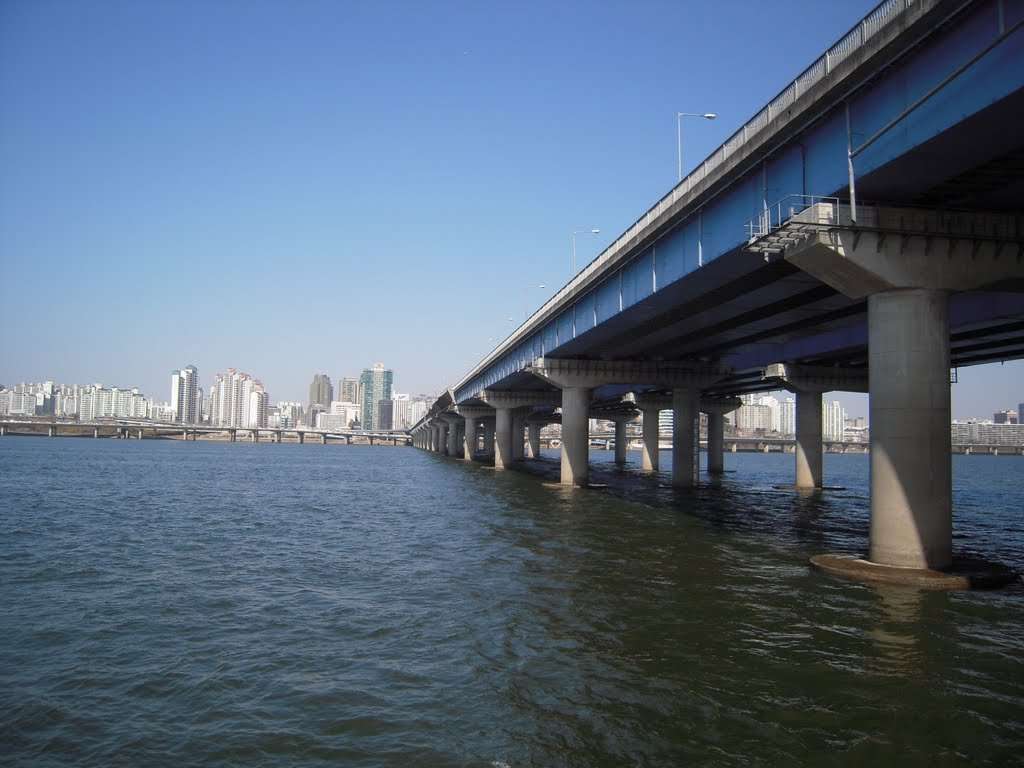Like many of the world’s largest and oldest metropolises, Seoul owes part of its development to its location on the banks of a river. In the case of the Korean capital, being situated along the Han River contributed to the flow of goods and resources necessary for a large community centuries before the development of trains or automobiles.
The Han River still flows through Seoul today, where the body of water is crossed by the Mapo Bridge. But while the bridge was built with the purpose of serving as a transit artery, it’s also been darkly co-opted by those looking for a place to end their own lives, and the site sees more suicides than almost any other in Korea. Unfortunately, a public service campaign looking to reverse the tragic trend has had the opposite effect, with suicides at Mapo Bridge increasing more than sixfold since the campaign began.
In September of 2012, authorities initiated the Bridge of Life Project in cooperation with Samsung Life Insurance and Cheil Worldwide, an advertising and public relations firm. As part of the project, reassuring messages were written on handrails and signs at intervals along the bridge, such as “Have you been eating alright?” and “Let’s walk together,” ostensibly giving the impression of a conversation with a concerned friend.
Other components of the effort included motion-activated lights to keep the distraught from being surrounded by darkness after making their way onto the bridge, and even sculptures to remind those passing by that there are people willing to listen and help them with the emotional pain they’re dealing with.
Initial hopes were high for the Bridge of Life Project, which was lauded with some 37 advertising and PR awards. Unfortunately, despite the widely accepted soundness of its theories, suicides at Mapo Bridge have risen dramatically since the project’s beginning. 2013 saw 93 such tragedies take place on the bridge, more than six times as many as in the previous year.
Experts feel that rather than offering encouragement to the emotionally unstable, the messages placed on the bridge have instead fed into Mapo Bridge’s unfortunate image as a place where people go to end their own lives. The tragic association is unlikely to be uncoupled anytime soon, and in light of the sobering results of the first full calendar year of the Bridge of Life Project, a growing number of people are calling for physical, rather than mental, countermeasures, such as glass walls and nets to prevent or catch jumpers.
Insert images: Ameblo (1, 2), NTDTV

Valhalla1759 on August 23rd, 2017 at 13:14 UTC »
positive affirmations
"God dammit. I hate my life, I'm such a failure...I'm gonna jump off that bridge over there"
"Okay, here goes nothing...fuck you life...you suck...oh man...I'm having second thoughts...I don't know if I can do this..."
looks around, sees signage and artwork
YOU CAN DO IT
WE BELIEVE IN YOU
YOU HAVE WHAT IT TAKES
EMBRACE OPPORTUNITY
YOU'RE STRONGER THAN YOU THINK
DON'T LIVE WITH REGRET
sniff "Thanks bridge, at least you understand me."
jumps
Plasmacamel on August 23rd, 2017 at 06:39 UTC »
That bridge doesn't look that high
HarmonizedInsanity on August 23rd, 2017 at 06:27 UTC »
Probably raised awarness about the bridge and it being a suicide spot. More people know it's a thing so they go there to do it.